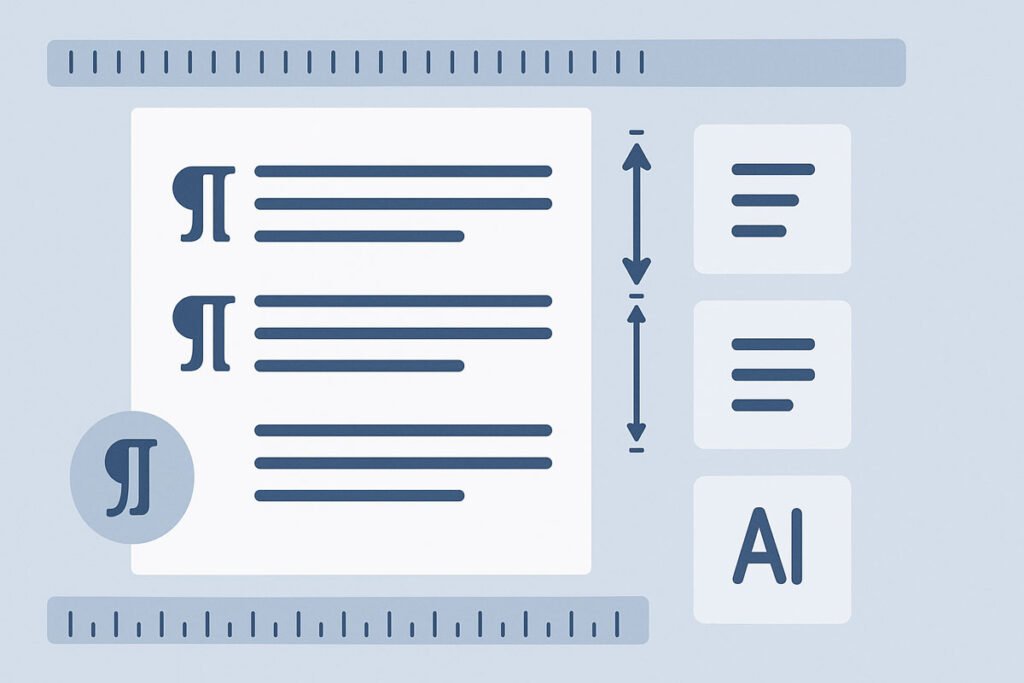Table of Contents
ToggleUnderstanding the asgn11 Spacing Lever: A Quick Introduction
What is the asgn11 Spacing Lever?
Ever heard the term “asgn11 spacing lever” and scratched your head? You’re not alone. It sounds like a complex piece of machinery, but it’s really just a catch-all term for the tools and methods you use to control spacing in your documents. It’s not a physical lever but a powerful concept that covers everything from digital functions in word processors to simple manual tricks.
Think of it as your personal command center for document layout. Getting a handle on these instructions is your first step toward creating assignments that look clean, professional, and are a pleasure to read.
Why Proper Spacing is Crucial for Your Assignments
Let’s be honest, formatting can feel like a chore, but proper spacing makes a world of difference in how your work is received. When your spacing is consistent and clear, it allows your instructor to dive into your ideas without getting distracted by a messy layout.
A well-spaced assignment just looks better. It shows you’ve put in the effort and have a high level of respect for the academic standards of your institution. That attention to detail can be the cherry on top that helps your grade.
Essential Tools for Perfect Spacing
Using Microsoft Word’s Spacing Features
Pro Tip: Microsoft Word is your best friend when it comes to managing document spacing. The “Paragraph” and “Layout” tabs are packed with options to precisely control line and paragraph spacing.
You can switch between single, 1.5, or double spacing with just a couple of clicks. To get started, head over to the “Home” or “Layout” tab and find the “Paragraph” settings. From there, you can fine-tune the spacing before and after paragraphs, making sure your document lines up perfectly with any given guidelines.
Exploring Other Digital Spacing Tools
Don’t have Word? No problem. Other digital tools like Google Docs and LibreOffice have your back with similar spacing controls. Their intuitive interfaces make it a breeze to adjust margins, line spacing, and paragraph settings, so you can get your assignments formatted correctly without any fuss.
For quick fixes, online text editors can be a lifesaver. These web-based tools let you paste your text and apply various spacing rules on the fly, which is perfect when you’re short on time.
Manual Techniques for Handwriting and Physical Documents
When you’re working on a handwritten assignment, keeping your spacing consistent is a whole different ball game. A simple ruler can help you set your margins, and using a physical guide—like a popsicle stick or even your own finger—between words can work wonders for legibility.
These low-tech methods are surprisingly effective for keeping your handwritten work neat. A little practice with these techniques will go a long way in improving your handwriting and the overall look of your physical documents.
Meeting Academic Standards: Spacing in APA and MLA
APA Style: The Go-To for Social Sciences
APA Requirements: Double-space the entire paper, including abstract, body text, and reference list. Set margins to one inch on all sides.
If you’re writing for the social sciences, you’ll likely be using the American Psychological Association (APA) style. The rules are simple: double-space the entire paper. That means the abstract, the body, and the reference list all get the same treatment. Also, make sure there’s no extra space hanging out before or after your paragraphs.
Following these guidelines is non-negotiable for APA papers, as it creates a uniform and readable experience for anyone reviewing your work.
MLA Style: Formatting for the Humanities
For those in the humanities, the Modern Language Association (MLA) style is your standard. Just like APA, MLA calls for double-spacing throughout the entire document. This applies to your heading, title, the main text, and your Works Cited page.
This consistent double-spacing creates a clean, uncluttered document that’s easy for your instructor to read and leave comments on. It’s always a good idea to check the latest MLA handbook, as guidelines can sometimes be updated.
General Best Practices for Academic Spacing
No matter what style guide you’re using, a few universal truths apply to academic spacing. Always pick a font that’s easy on the eyes and keep your margins consistent. Stick with left-aligned text unless you’re specifically told otherwise.
In single-spaced documents, adding a blank line between paragraphs can be a great way to improve flow. The ultimate goal is always to produce a document that is both professional and a breeze to read.
Practical Application: Spacing for Different Assignment Types
Formatting Essays for Readability
In a standard essay, good spacing is your roadmap, guiding the reader through your arguments. Double-spacing is the popular choice because it leaves plenty of room for feedback. Clear paragraph breaks act as signposts, separating your ideas and making your essay easy to follow.
Indenting the first line of each paragraph is another classic move that boosts readability. This small visual cue helps distinguish one paragraph from the next, giving your essay a more organized and traditional feel.
Structuring Research Papers and Reports
When you’re dealing with complex information in research papers, spacing is your organizational ally. Use headings and subheadings to slice your text into digestible sections. Keeping the spacing around these headings consistent creates a clear visual hierarchy.
Don’t forget about your tables and figures. They need clear spacing too, so your data is presented in a way that’s easy to digest. In research, a professional presentation of your findings is just as important as the findings themselves.
Creative and Visual Assignments
In creative projects like presentations or posters, spacing becomes an artistic tool. Strategic use of white space can make key elements pop and prevent your design from feeling crowded or chaotic.
Feel free to play around with the spacing between text and images to find a layout that’s both balanced and visually striking. Here, the goal is to use spacing to amplify the creative impact of your work.
Troubleshooting Common Spacing Issues
Fixing Inconsistent Line Spacing
Common Problem: Inconsistent line spacing can make your document look unprofessional and distract from your content.
Dealing with wonky line spacing can be a real headache, but the fix is usually simple. In Word, the “Paragraph” dialog box is your best friend for setting precise line spacing. If you’re getting unwanted gaps, check if the “Don’t add space between paragraphs of the same style” option needs to be ticked.
A quick fix is often to select the entire document and apply a single, uniform line spacing setting. This will give your document a consistent and polished look from top to bottom.
Correcting Awkward Gaps and Justification
Those strange, oversized gaps between words are often the result of using full justification. The easiest solution is to switch to left-aligned text. If you’re required to use full justification, tweaking your hyphenation settings can help the text flow more naturally.
If you’re seeing unwanted space between paragraphs, the culprit is usually the “Space Before” or “Space After” settings. Dive into your “Paragraph” settings and adjust these values to get your paragraph spacing just right.
When to Ask for Help
If you’ve tried everything and your document’s spacing still looks like a mess, it’s time to call for backup. Don’t be afraid to ask your instructor or visit your campus writing center for some expert advice.
Sometimes, all it takes is a fresh pair of eyes to see the problem. Reaching out for help shows you’re committed to getting it right, and it’s a great way to build your formatting skills for the future.
Conclusion: Becoming a Master of Document Formatting
Getting comfortable with the asgn11 spacing lever instructions is a skill that will serve you well throughout your academic career. Once you understand the power of good spacing and learn to wield your formatting tools, you’ll see a major improvement in the quality of your assignments.
Whether you’re using Microsoft Word or following strict academic style guides, the core principles of effective spacing remain the same. With a bit of practice and a keen eye for detail, you’ll become a document formatting pro, ready to present your work in the best possible light.













